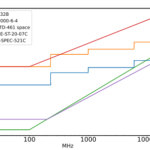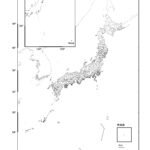2023-07-06 ワシントン大学セントルイス校
◆気候変動の下で成長期が終わる時期を正確に把握することは、地球の炭素循環を正確にモデル化する上で重要です。気候温暖化が成長期の前または後に起こるかによって、秋の始まりや持続期間に異なる影響があります。夏至の前の温暖化は、成長リズムを加速させ、葉の変色と光合成の減少を引き起こし、秋の始まりを早めます。
◆一方、夏至後の温暖化は葉の変色の進行を遅らせ、秋の期間を延長し、葉落ちを遅らせます。これは、木々が昼の長さの変化と共に成長リズムを調整するための進化的適応とされています。
◆この研究は、北半球の広範な地域と森林タイプにわたって有効であり、成長期の制約と要因について統一的な理解を提供しています。
<関連情報>
- https://crowtherlab.com/the-summer-solstice-effect/
- https://www.science.org/doi/10.1126/science.adf5098
気候温暖化が秋の葉の老化のタイミングに与える影響は、夏至の後に逆転する。 Effect of climate warming on the timing of autumn leaf senescence reverses after the summer solstice
Constantin M. Zohner,Leila Mirzagholi,Susanne S. Renner,Lidong Mo,Dominic Rebindaine,Raymo Bucher,Daniel Palouš,Yann Vitasse,Yongshuo H. Fu,Benjamin D. Stocker,Thomas W. Crowther
Science Published:7 Jul 2023
DOI:https://doi.org/10.1126/science.adf5098
Editor’s summary
Global warming is changing the timing of photosynthesis, with leaves emerging earlier in spring in the temperate and boreal zones. A longer growing season could mean greater carbon sequestration in forests, but the timing of leaves falling in autumn depends on multiple cues, making it difficult to predict. Zohner et al. investigated how leaf senescence relates to day length, temperature, and early-season photosynthesis across northern forests using remote sensing, ground observations, and experimental data. They found that warming had opposing effects on senescence dates depending on when it occurred: Warmer springs with higher photosynthesis correlated with earlier senescence, wheras warmer temperatures in autumn delayed senescence. Incorporating this shift in knowledge may improve predictions of vegetation response to climate change. —BEL
Structured Abstract
INTRODUCTION
Ongoing climate change is causing rapid shifts in plant phenology, with far-reaching effects on the terrestrial carbon cycle and biodiversity. While advances in spring leaf-out dates in temperate and boreal forests are well documented, the effects on autumn leaf senescence are less clear. This is because leaf senescence is not only affected by temperature but also by day length and vegetation activity early in the season in ways that are poorly understood. Accurately predicting future growing-season lengths and plant photosynthesis requires a better understanding of these interacting mechanisms at broad spatial scales.
RATIONALE
Local observations and experiments suggest that early-season warming, causing earlier spring leaf-out and faster plant development, tends to advance autumn senescence dates. Conversely, late-season warming tends to delay autumn senescence. If true more generally, then climate warming has opposing effects at the start and end of the growing season, with a reversal of effects somewhere in between. To test the generality of the opposing effects of climate warming on leaf senescence in Northern Hemisphere forests, we used satellite, ground, and carbon flux data, as well as controlled experiments.
RESULTS
Our results revealed that warming early and late in the growing season indeed has contrasting effects on leaf senescence, with a reversal occurring after the summer solstice. Across 84% of the northern forest area, we found that warmer temperatures and increased vegetation activity before the solstice advance the onset of senescence by 1.9 ± 0.1 days per °C, whereas warmer post-solstice temperatures slow the progression of senescence by 2.6 ± 0.1 days per °C. Between 1966 and 2015, the earlier onset of senescence has led to advances of 0.20 ± 0.07 days per year of the date at which autumn temperature starts to drive senescence progression. By contrast, mid-senescence continues to occur slightly later by 0.04 ± 0.01 days per year, leading to a lengthening of the autumnal senescence period.
In our experiments, warmer pre-solstice temperatures also led to earlier primary growth cessation (bud set), demonstrating that the impact of a warmer pre-solstice period extends beyond leaf development and life span. This highlights the crucial role of overall plant development and sink activity before the summer solstice in determining growing-season length.
CONCLUSION
We have developed a unified explanatory framework for predicting autumn phenology, showing that leaf senescence now tends to begin earlier, because of increased pre-solstice vegetation activity, but progresses more slowly, such that the end of senescence occurs later. The reversal in trees’ responsiveness to warming after the summer solstice likely is triggered by changes in day length and allows them to initiate the physiological processes of leaf senescence and nutrient resorption in a fine-tuned balance between source and sink dynamics. Our results demonstrate the impact of developmental constraints (from cell and tissue growth) on autumn leaf senescence and forest productivity, affecting trends in growing-season length across the entire Northern Hemisphere. These insights provide a better understanding of the changes in growing seasons and carbon uptake of temperate and boreal forests under climate change.
Autumn phenological responses to pre-solstice and post-solstice climate warming.
In cold years, slow development before the summer solstice delays the onset of senescence, and cold autumn temperatures accelerate senescence progression. In warm years, fast development before the summer solstice advances senescence onset, and warm autumn temperatures slow senescence progression, delaying the end of senescence.
Abstract
Climate change is shifting the growing seasons of plants, affecting species performance and biogeochemical cycles. Yet how the timing of autumn leaf senescence in Northern Hemisphere forests will change remains uncertain. Using satellite, ground, carbon flux, and experimental data, we show that early-season and late-season warming have opposite effects on leaf senescence, with a reversal occurring after the year’s longest day (the summer solstice). Across 84% of the northern forest area, increased temperature and vegetation activity before the solstice led to an earlier senescence onset of, on average, 1.9 ± 0.1 days per °C, whereas warmer post-solstice temperatures extended senescence duration by 2.6 ± 0.1 days per °C. The current trajectories toward an earlier onset and slowed progression of senescence affect Northern Hemisphere–wide trends in growing-season length and forest productivity.




